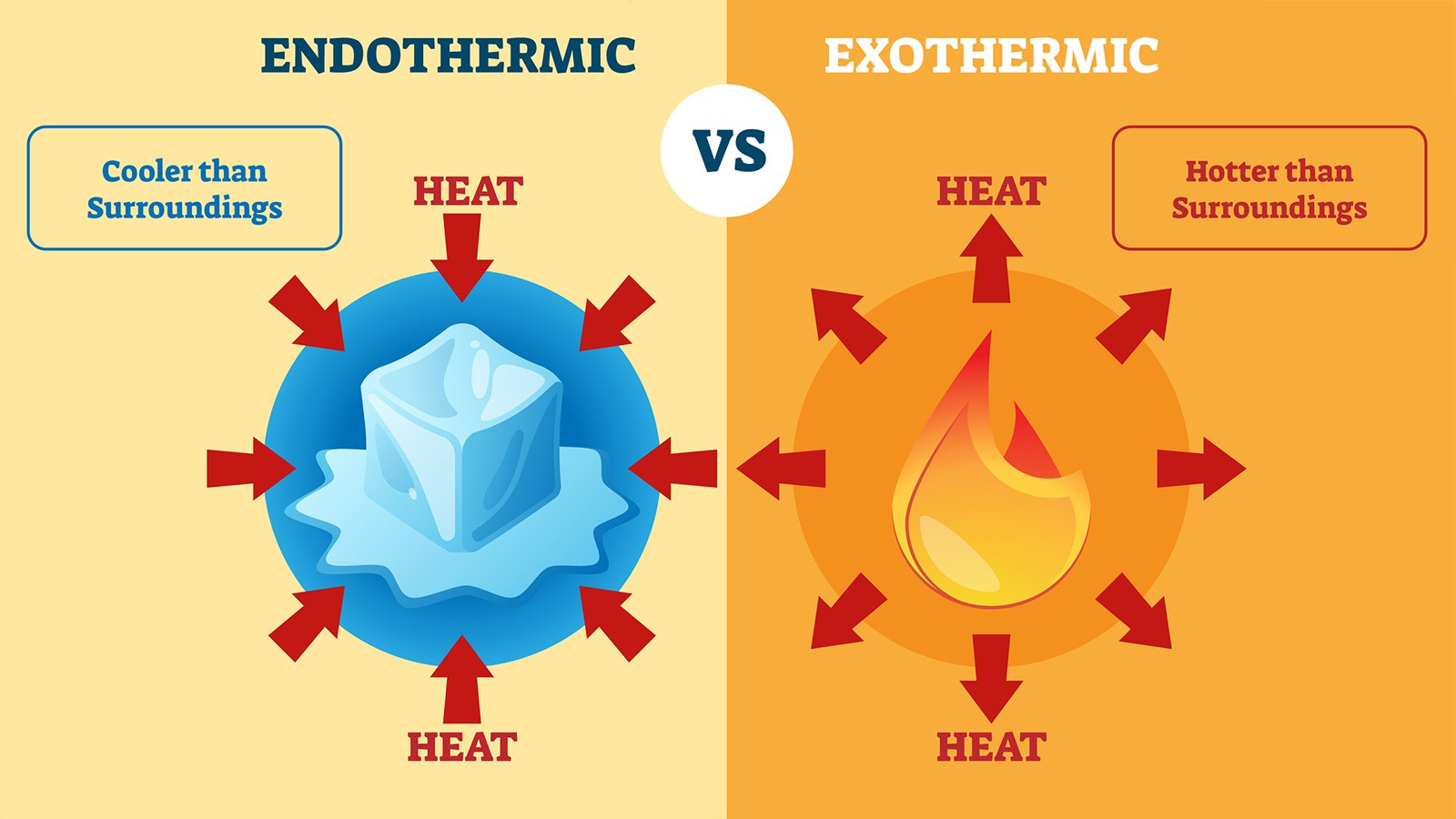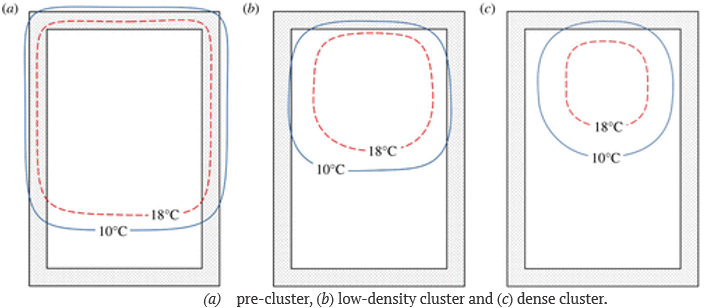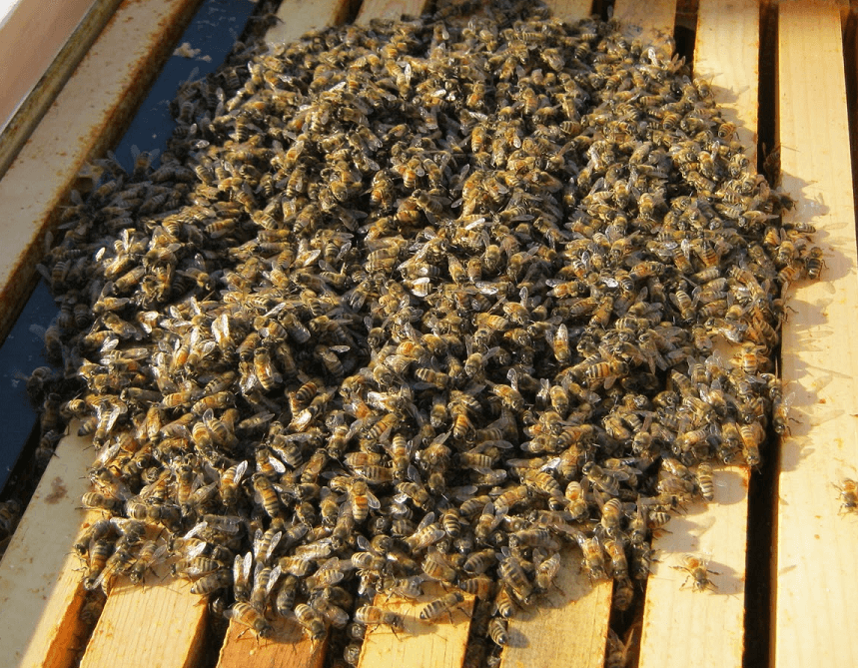Langstroth’s “Intelligent Cultivator” Part 3 of 7 – Clustering A Stress Response
- Posted
Clustering – Stress Response (Heat Sink)
Most research today is done using man-made wooden enclosures 19mm/3/4” thick which as we mentioned in a previous blog have 4 to 7 times more thermal conductivity than tree nests. So, are honeybees forced to cluster in man-made enclosures or is it a benign reaction? Is clustering a form of evolutionary insulation or is it a distress response misunderstood because of their overwintering behavior dominated today by observation done in thin-walled wooden hives? Many honeybee behaviors previously thought to be normal may only be a coping mechanism caused by human intervention. For example, clustering in a tree enclosure may be an optional, rare, heat conservation behavior for established colonies, rather than the compulsory, frequent, life-saving behavior as a result of man-made thin-walled wooden commercial hives which act as little more than a boundary between the air gap around the colony and the outside world.

Clustering in a thin-walled hive is when the individual honeybees begin a process of packing closer and closer together first forming a warmer less dense core (18°C/64°F) where the queen is and then outward toward a cool tighter mantle (10°C/50°F) in response to nest air temperatures when they begin to fall below 18°C/64°F. The core is where almost all the metabolic heat is generated while the honeybees in the mantle are experiencing a temperature that limits their ability to generate heat and if it falls below 10°C/50°F the honeybees begin to experience hypothermic shutdown. In the core the colony stays around 33°C/92°F anytime brood is present (early spring and summer) and 18°C/64°F without brood (late fall and winter). The exothermic or heat generating/releasing honeybees in the core of a cluster will eventually tire and need to rest. They will make their way out to the mantle, and the outside mostly endothermic inactive heat absorbing honeybees eventually move back inward, where they warmup and begin to take another shift as active heaters.
All winter long, workers move in and out of this cluster, taking turns and will slowly move upward as winter proceeds consuming warmed stores above them. This rotation of the honeybees from the warm core to the cool mantle pulls heat from the core in the form of the warmed yet tired honeybees where they become inactive and cool on the mantle. As honeybees begin to die on the mantle from hypothermic shutdown and the surface temperature of the mantle cools even more the cluster tightens reducing insulative air space between the bodies of the honeybees resulting in increased thermal conductivity of the cluster—like crushing a down coat which only works because of the warm air space trapped between the feathers. This cycle of compression could continue if nest air temperatures fall, resources are exhausted, and colony mass declines. The core temperature can then no longer be maintained and the colony succumbs to starvation and eventual hypothermic shutdown (death).

Resent research found that a honeybee colony increases in thermal conductivity, on transition from pre-cluster to dense mantle, by a factor of approximately 2, and insulation R-value can decrease by more than 11. These results show that the mantle does not act like insulation since the cluster mantle does not meet criteria for insulation but does meet all heat sink criteria of dissipating the heat away from the core. Then why do they cluster? Honeybees need 25°C/77°F to be at their best for heat producing, below 18°C/64°F their heating ability falls fast, and at 10°C/50°F they are on the edge of hypothermic shutdown. So, if the inner wall of the enclosure can be maintained at 18°C/64°F then clustering is not needed but if the inner wall temperature drops as well as the temperature of the honeybees closest to it then clustering begins. Chilled honeybees will want to move inward closer to honeybees that can effectively still produce heat. This gradually creates a larger gap of cooling air between the inner wall and the outer honeybees allowing the nest air temperature to lower continuing the collapse inward to a tighter and tighter cluster.
At the 10˚C /50˚F body temperature of a worker in the mantle, that honeybee is nearly paralyzed with cold, yet burning through honey to maintain even that temperature. As the ambient temperature around a honeybee approaches brood nest temperature, that honeybee’s sugar consumption rate drops to near nothing. Even their protective body hair has an impact on colony heat transfer but not when tightly clustered. Once their bodies touch it increases the absorption of heat from one honeybee to the other of lower temperature.
This tighter and tighter cluster begins increasing the absorption of heat from one honeybee to the other of lower temperature (increasing the conductivity of heat). A transition from a state where the honeybees can suppress internal convection within the nest, into a state of high internal convection and conduction because their bodies being pressed together, results in increased individual honeybee stress where each honeybee is sapping heat from the other. Tight clustering is primarily for individual survival by thermal contact.
Clustering is a survival behavior in response to an existential threat—resulting in increased stress due to cold and exertion. A desperate struggle to crowd closer to the ‘fire’ or otherwise die.” This is opposed to the conventional view that the cluster is a benign thermal improvement on the pre-cluster state such as putting on a warm blanket.
